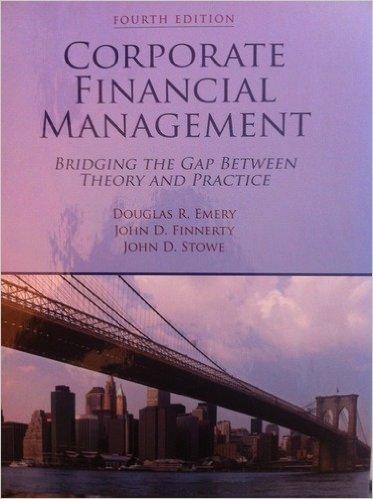Question
Capstone analytical review of Chapters 2-4. Calculate liquidity and profitability measures and explain various financial statement relationships for an excavation contractor Gerrard Construction Co. is
Capstone analytical review of Chapters 2-4. Calculate liquidity and profitability measures and explain various financial statement relationships for an excavation contractor Gerrard Construction Co. is an excavation contractor. The following summarized data (in thousands) are taken from the December 31, 2010, financial statements:
For the Year Ended December 31, 2010:
Net revenues
$32,200
Cost of services provided
11,400
Depreciation expense
6,500
Operating income
$14,300
Interest expense
3,800
Income tax expense
3,200
Net income
$ 7,300
At December 31, 2010:
Assets
Cash and short-term investments
$ 2,800
Accounts receivable, net
9,800
Property, plant, and equipment, net
77,400
Total assets
$90,000
Liabilities and Owners Equity
Accounts payable
$ 1,500
Income taxes payable
1,600
Notes payable (long term)
47,500
Paid-in capital
10,000
Retained earnings
29,400
Total liabilities and owners equity
$90,000
At December 31, 2009, total assets were $82,000 and total owners equity was $32,600. There were no changes in notes payable or paid-in capital during 2010.
Required:
a. The cost of services provided amount includes all operating expenses (selling, general, and administrative expenses) except depreciation expense. What do you suppose the primary reason was for management to separate depreciation from other operating expenses? From a conceptual point of view, should depreciation be considered a "cost" of providing services?
b. Why do you suppose the amounts of depreciation expense and interest expense are so high for Gerrard Construction Co.? To which specific balance sheet accounts should a financial analyst relate these expenses?
c. Calculate the companys average income tax rate. (Hint: You must first determine the earnings before taxes.)
d. Explain why the amount of income tax expense is different from the amount of income taxes payable.
e. Calculate the amount of total current assets. Why do you suppose this amount is so low, relative to total assets?
f. Why doesnt the company have a Merchandise Inventory account?
g. Calculate the amount of working capital and the current ratio at December 31, 2010. Assess the companys overall liquidity.
h. Calculate ROI (including margin and turnover) and ROE for the year ended December 31, 2010. Assess the companys overall profitability. What additional information would you like to have to increase the validity of this assessment?
i. Calculate the amount of dividends declared and paid during the year ended December 31, 2010. (Hint: Do a T-account analysis of retained earnings. )
Step by Step Solution
There are 3 Steps involved in it
Step: 1

Get Instant Access to Expert-Tailored Solutions
See step-by-step solutions with expert insights and AI powered tools for academic success
Step: 2

Step: 3

Ace Your Homework with AI
Get the answers you need in no time with our AI-driven, step-by-step assistance
Get Started


